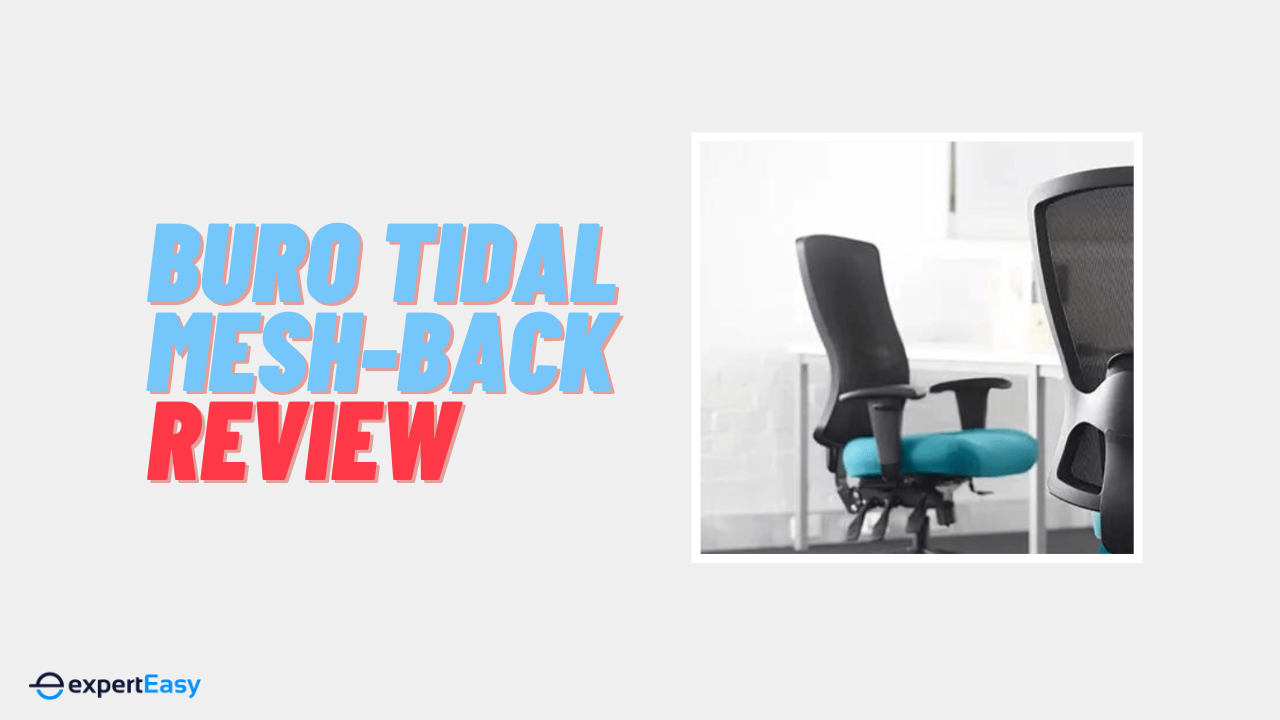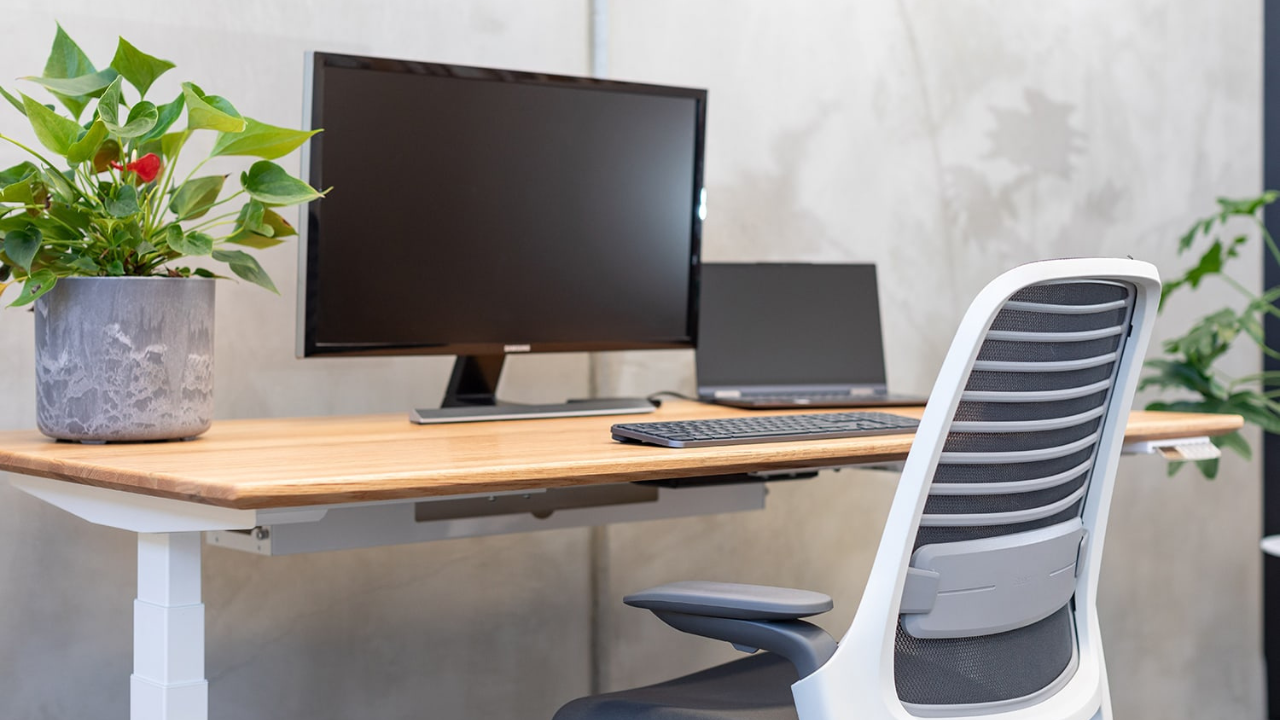Standing desks are suitable for completing more work in less time since they keep you in an active position. Beyond increasing productivity, there are also health benefits to using a standing desk.
They keep you from passive activities that have been proven detrimental to your health. However, standing for long can be boring with your feet being idle the who time. Are you thinking of how to engage your legs while you work? Adding a balance board to the mix is the perfect solution!
This article details everything you need on how to use balance boards. You will learn the different types, what they do, and their benefits. You are in for a great read on how to improve your standing desk benefits with an extra fitness tool.
What is a Balance Board?
Balance boards are a fitness tool that helps to build balance and stability. They improve your posture and stability when you stand on them. In its simplest form, a balance board is like a see-saw. They are set on a fulcrum or support with a surface for you to stand on. This fulcrum offers a degree of movement that requires you to maintain balance by constantly adjusting your posture.

Balance boards are commonly used as rehabilitation tools for injuries like sprains around the ankles. You can also use them as part of your everyday life while working at your standing desk. Standing desks are an innovative solution to sitting for long hours.
But standing several hours at a time can also strain your feet, ankles, and back. Many have tried the option of anti-fatigue mats and shoes with extra cushioning, but these can't compare to a balance board's versatility. A balance board offers an easy way to shift weight to keep your limbs from getting strained.
Adding a balance board to your home office workstation allows you to enhance your posture and balance. This has many other incredible advantages that we'll go over shortly. Overall, it motivates you to move more during the day, keeping your joints flexible, reducing strains and pains, and even keeping you more focused.
What are the Types of Balance Boards?
There are five main types of balance boards based on two parameters. The first parameter is whether the fulcrum is fixed to the board. While the second parameter is the board's movement, either in two directions or a 360°movement. Under these five main groups, there are varying designs.
These five basic types of balanced boards are Rocker boards, Wobble boards, Springboards, Half balance boards, and Roller boards. Some less common types include spring-based boards, half balance balls, and basic balance pads. The primary goal when standing on any balance board is to keep it from touching the ground. Once you maintain your balance, the board will remain on its support. See more details about each board type below:
Rocker

Rocker boards usually have a flat surface that sits over a fixed fulcrum. There is also a simpler design reserved mainly for kids. This simple design features a single curved wooden piece. From the name, rocker boards rock in just two directions—either forward and backward or side to side. This makes them the easiest balance board to use and the best starting point for beginners. They are easy to control and keep balance while using.
Wobble

Wobble boards have more degree of movement than rocker boards. In design, they are made of a round standing surface with a hemispherical fulcrum fixed to the centre of the base. This fulcrum type allows the board to tilt in every direction requiring more balance to keep stable. It is thus more suitable for intermediate users and some beginners.
Roller

Roller boards or rocker roller boards have an unattached fulcrum. This makes them the most challenging balance boards to use. They are usually a board that resembles a skating board on a separate cylindrical roller. The challenge with this type of board is to keep the board stable on the free roller. Roller boards are appropriate for expert balance board users, not beginners.
Sphere-and-ring boards are similar to roller boards. These boards have an unattached ball instead of a cylindrical fulcrum. The user can tilt and rotate in any direction. But usually, these boards are more challenging than the usual roller boards and expensive. Roller boards are only recommended for advanced users like athletes, especially those with experience in surfing, hockey, or skateboarding.
Spring

In comparison to the others, springboards are a modern design. The springs located between the base and the deck serve as the fulcrum. When the springs compress, the device becomes unstable, especially if you move in several directions. Springboards are less complicated than roller boards and are more similar to wobble boards. They can appear cumbersome, though.
Half Balance Ball

Half balance ball boards look like exercise balls with a flat bottom surface. The half balance ball has a configuration that is almost opposite of the wobble board. They engage your core muscles and lower limbs via an unstable and dynamic surface. The downside is that they are much bigger than most other options. They may not suit you, especially if you have a small space.
Balance Pads

Balance pads aren't considered a type of balance board. They are taken into account because, while less risky than roller boards, they can still test your balance. Balance pads are a gentle initial step for people wishing to improve their balance and work their way up to one of the other balance boards indicated above. Still, they are advised for the elderly and those recuperating from injuries. Some balance boards have balance pads with them on purchase.
What are the Benefits of Using a Balance Board?
In general, steady movement is better than a sedentary position. Working at the desk all day without exercising your lower limbs is unsuitable for your health. Balance boards have benefits in this regard. They will help keep the muscles around your limbs active while you work.
Improvement of Body Posture
Naturally, the human body maintains a good posture by itself. We form bad postures through our actions. Bad postures can be formed if we are constantly slouching, become overweight, or live a sedentary lifestyle.
A significant benefit of using balance boards is their ability to help restore or maintain a good body posture. Balance boards can help you build strength in vital muscles like those in the abdominal area, legs, and back.
Aside from exercising muscles that may have been dormant, they also help to distribute body weight and fats evenly. Thus maintaining a good body shape and posture.
Increased Proprioception
Using balance boards can improve proprioception or the perception of your body’s position and movements in three-dimensional space. They are very beneficial in developing ankle proprioception, which is essential for balance. Balance boards may help strengthen tendons, muscles, and ligaments as they cooperate to create stability. Improved proprioception is needed for a balanced body posture, stability, and coordinated movement.
Muscle Toning
Balance boards are also good for toning leg muscles. As you work your body to find balance, tons of minor adjustments are made across multiple muscle groups around your legs. This activity gets the muscles exercised and strengthened.
Muscles that are healthy and strong can reduce limb oedema, ease muscular fatigue, increase circulation, and lower the risk of injury. Additionally, they'll improve your physical awareness and coordination, making executing more tasks easier.
Increased Concentration and Alertness
Your brain can also benefit from using a balancing board. Your focus, eye control, language development, motor abilities, and more can all be enhanced by balance training. It forces us to continuously employ and develop neural networks, which aid in the coordination of the mind and body. Who doesn't want to be more coordinated and focused?
The fact that using a balance board literally keeps you on your toes is something that most people would not think about. You'll be more aware of everything around you, including the extremely dull report you're preparing for work. You get to work better with the alertness and concentration it brings.
Finally, balance boards are enjoyable even when you aren't standing at your workstation. You can use them in your workouts, compete in balance games with your family members, or wiggle around while listening to your favourite music.
What Drawbacks Are There?
There are really no severe downsides to the use of balance boards. The first issue with balance boards is that using them for the first few times can be a little nerve-wracking. It can occasionally feel like you're about to fall off the board and get hurt. This is not a worry because your body quickly learns to maintain balance and move with the board. Fortunately, with continued use, this sensation usually goes away rather soon. Choosing a board that is commensurate with your level of balance is essential.
Another mild issue is that they can be quite costly. While you can find a few budget-friendly options on Amazon and other retailers, several others cost over $100. That can seem like a considerable amount to spend on a balance board, especially if you haven’t used it before. However, the investment will be justified in the long-term usage.
Who Should Use a Balance Board?
Sincerely, a balance board should be used by everyone. They may be used anywhere you'd typically stand to do work, which is why individuals who use standing desks adore them. Incorporate one into your exercise or meditation routine, or use one while cleaning the dishes or making a phone conversation.
Kids and adults alike can benefit significantly from balance boards. Physical therapists frequently suggest their use in training in static and dynamic balancing. However, people who are dizzy or have balance issues shouldn't use them because it could cause harm. Before you get a good grasp of your balance board, you may hang onto a sturdy material while using your balance board.
What is the Cost of Balance Boards?
With a wide variety of balance boards comes a wide price range. Averagely, they can cost between $30 and $300. For any level of user, you can get a good balance board for around $30-$120. There may also be others with prices above $300, but there is nothing extraordinary they will go over that can’t be gotten within the $300 range.
For new users who have not tried a balance board before, we suggest selecting a $30–$50 rocker or wobble board. Anything within this price range will give you a feel of a balance board's basic workings and benefits. From there, you can decide if you want to upgrade to a better type.

Get a Balance Board Now
Balance boards are obviously not a primary need for your home office, but they are worth considering. They will make your day lively and keep your nerves and muscles active.
We recommend a balance board because of the excellent benefits they offer to your health. What is more, they also offer productivity benefits for your work life. And there are numerous cheap options you can choose from.








